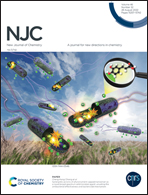Comparative density functional studies of BiMO3 polymorphs (M = Al, Ga, In) based on LDA, GGA, and meta-GGA functionals†
Abstract
We report the relative stabilities, structural properties and ferroelectric properties of different polymorphs of BiMO3 (M = Al, Ga, In) in the framework of density functional theory (DFT). We compared several exchange–correlation functionals at different levels of DFT. This includes a local density approximation (LDA), different forms of a generalized gradient approximation (GGA) and a meta-generalized gradient approximation (meta-GGA), as well as hybrid functionals. First, we calculated the structural, electronic, and ferroelectric properties of the ground state phases of BiMO3. We compared our results with the experimental data. We found that AM05, MS0, and SCAN functionals improved the values of structural parameters at a same level of accuracy as the hybrid HSE functional. Next, we analyzed the relative stabilities of 16 BiMO3 polymorphs. We found that only two meta-GGA functionals, MS2 and SCAN, described correctly the crystallographic ground states of BiMO3. As a result, these functionals are most suitable to study polymorphism in BiMO3 compounds. We also found that most of the low-energy phases of BiAlO3 and BiGaO3 were polar structures with large values of ferroelectric polarization. This suggests that these materials could be an alternative to the widely used toxic Pb-based ferroelectrics.



 Please wait while we load your content...
Please wait while we load your content...